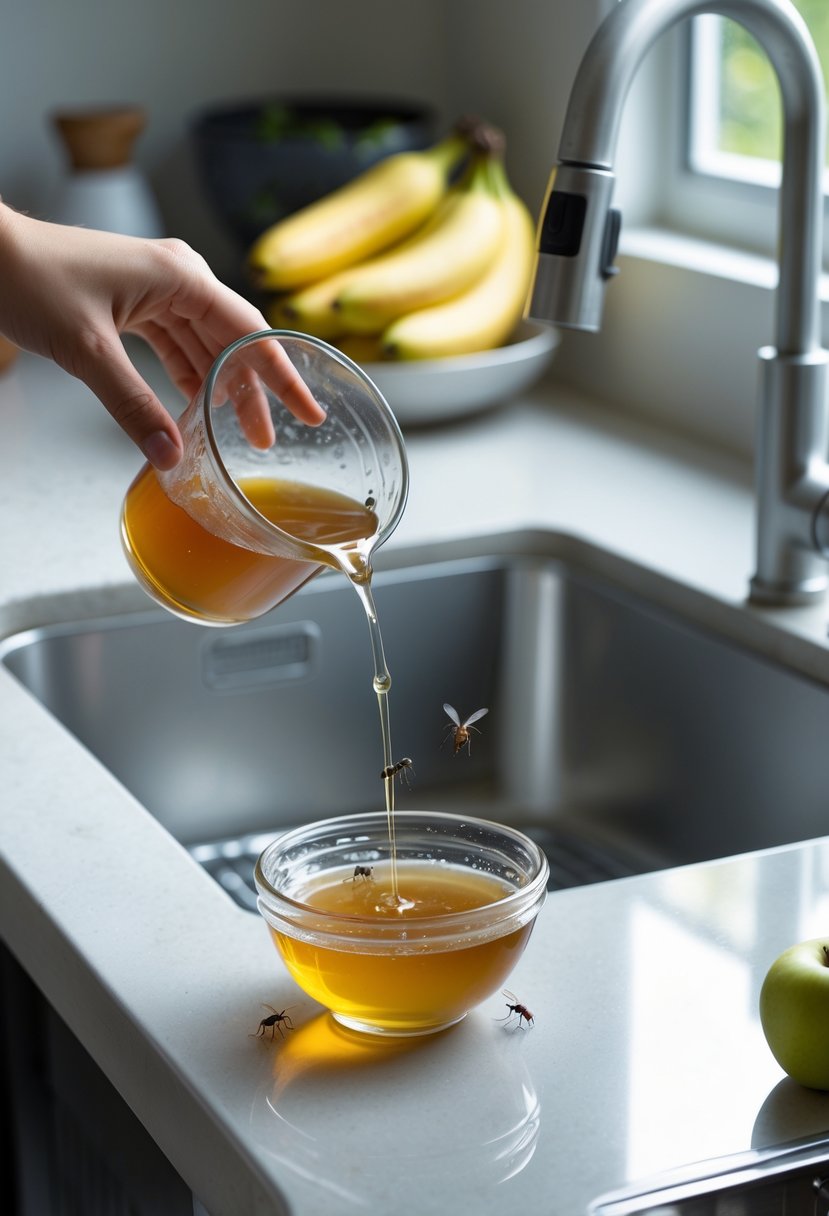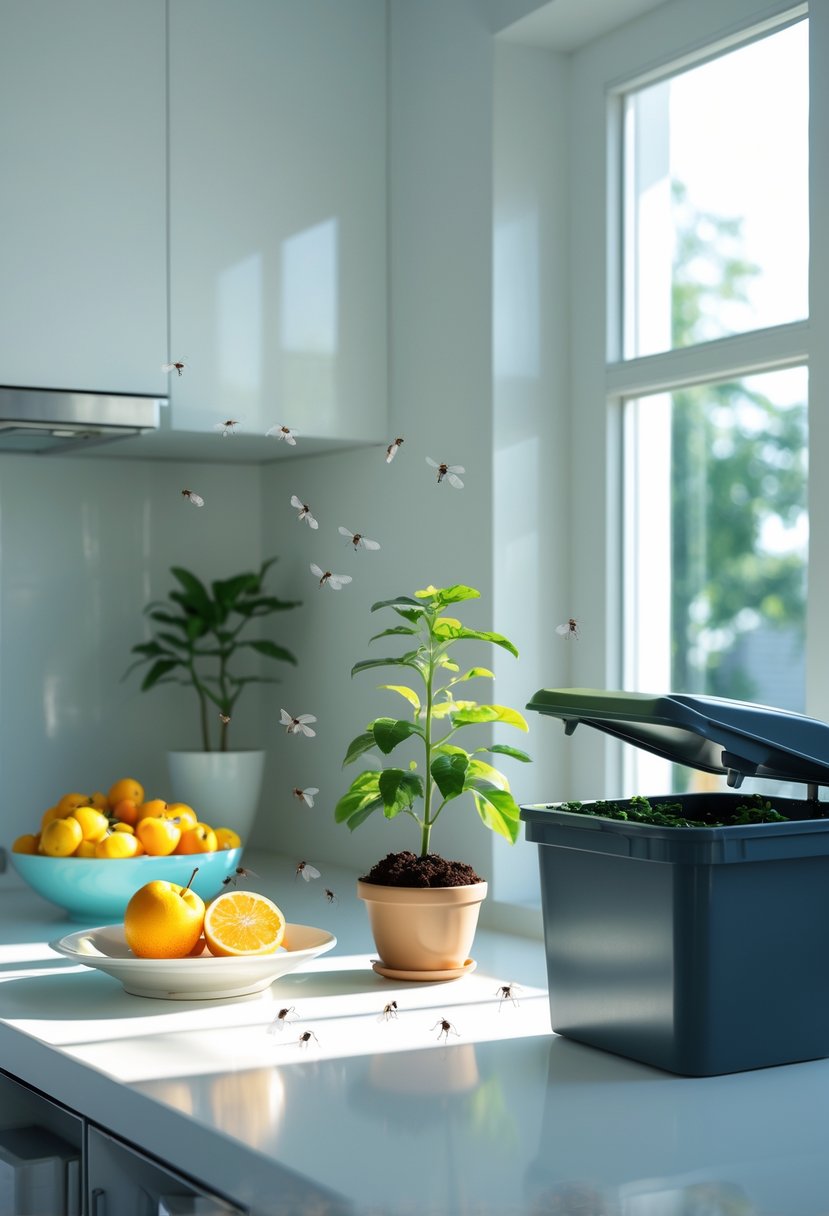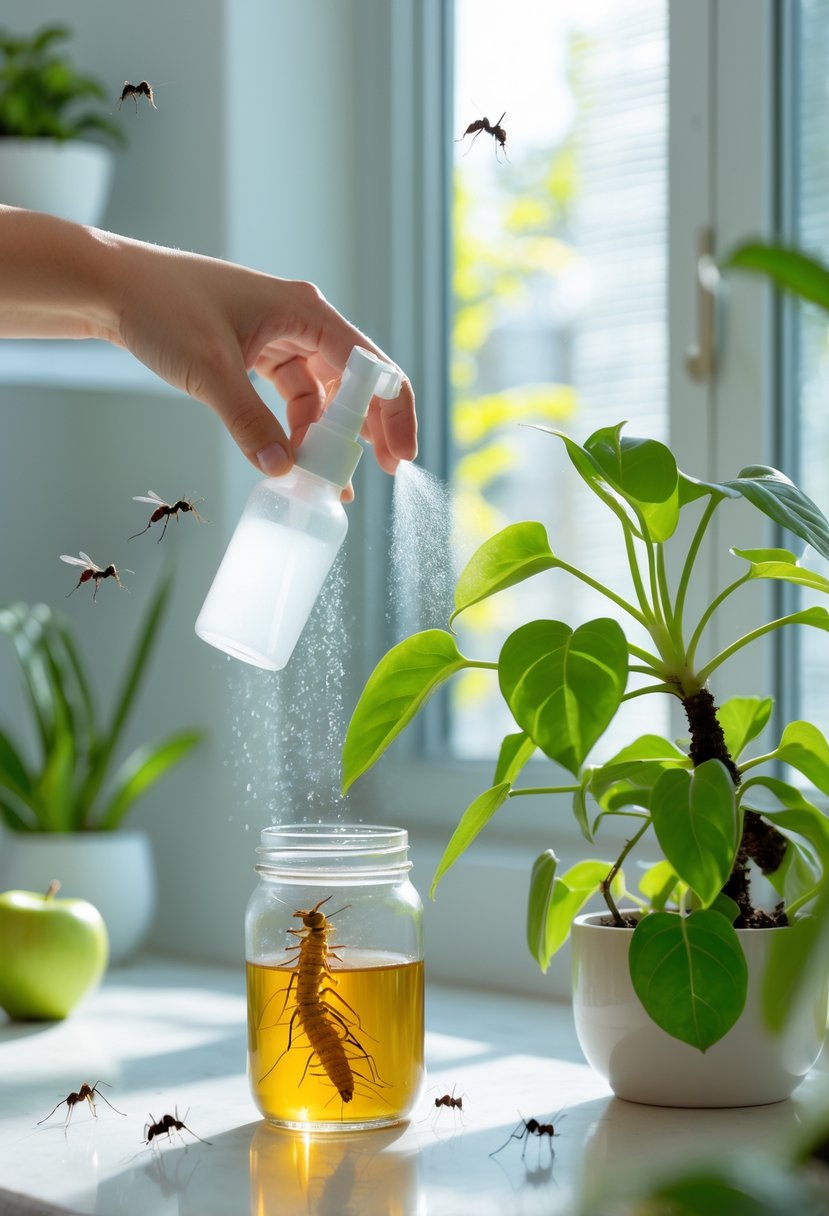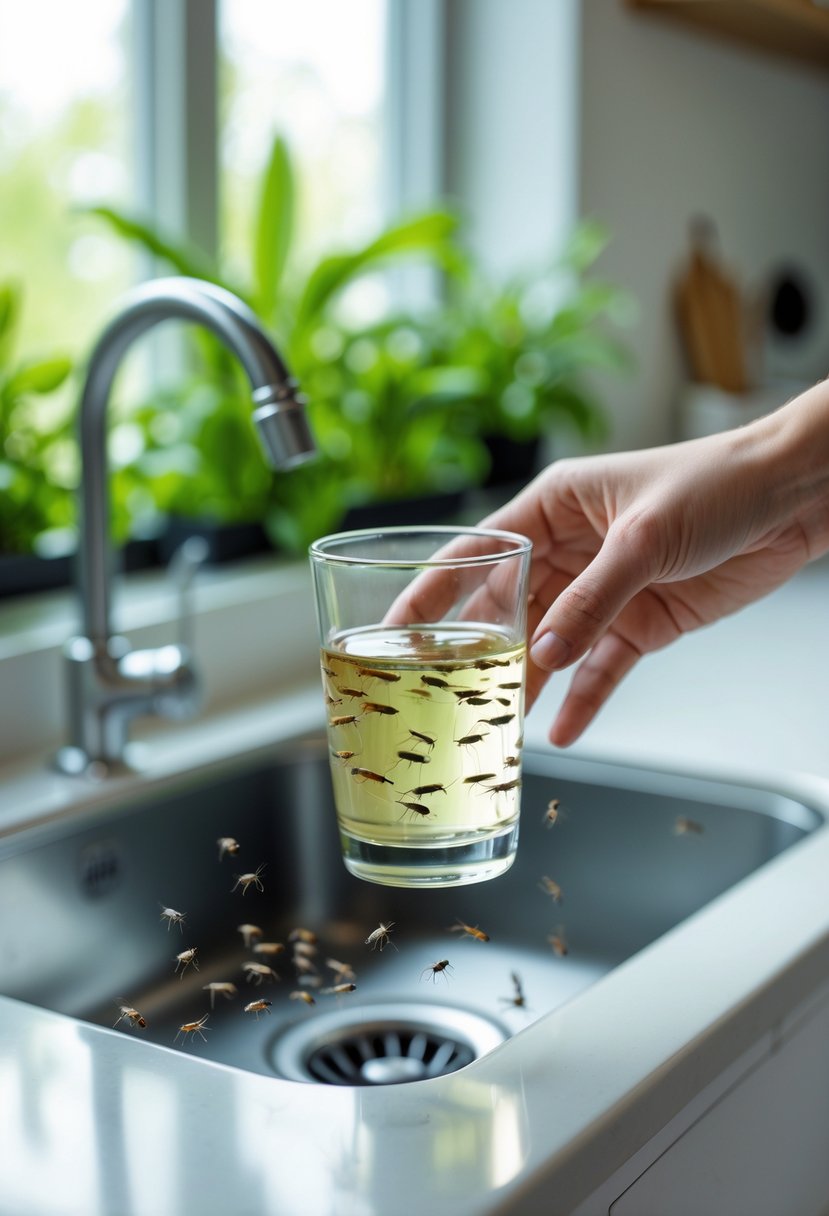How to Get Rid of Gnats Quickly and Effectively in Your Home
Gnats are small flying insects that can quickly become a nuisance indoors and outdoors. They are often attracted to moisture, decaying fruit, and organic matter. The most effective way to get rid of gnats is to eliminate their breeding places by cleaning thoroughly, drying wet areas, and using traps that attract and capture them.

Many people struggle with identifying where gnats come from, but common sources include drains, overripe fruit, and damp soil in potted plants. Removing these attractants helps stop new gnats from appearing and reduces their population quickly.
In addition to cleaning, simple traps using items like vinegar, dish soap, or light can lure gnats in and prevent their escape. Combining these methods offers a clear path to controlling and reducing gnat problems efficiently.
Common Causes of Gnats Indoors

Gnats usually gather where there is moisture, food, or organic matter. They often come from specific spots with damp conditions or decaying materials. Different types of gnats may appear based on the indoor environment and hygiene.
Identifying Gnat Breeding Areas
Gnats breed mostly in moist places where organic material breaks down. Overwatered houseplants are a common spot because wet soil attracts fungus gnats. Drains, garbage disposals, and trash bins can also serve as breeding grounds if they are damp and not cleaned regularly.
Fruit or vegetable scraps left out can draw fruit flies, a common gnat type. Houseplants with decaying leaves or stale water in saucers also support breeding. Checking these areas often helps find where gnats come from.
Factors That Attract Gnats
Gnats are drawn to moisture and food, so keeping things dry helps reduce their presence. Overwatering plants, leaving uncovered trash, or having spills on counters attracts them. Warm and humid indoor areas increase gnat activity.
Fermenting fruit, leftover wine, or beer spills release scents that attract fruit flies. Dirty drains or standing water from leaky pipes also serve as magnets. Regular cleaning and careful water management limit these factors.
Types of Gnats Found in Homes
Fungus gnats and fruit flies are the most common indoor gnats. Fungus gnats live mainly in wet soil and feed on plant roots. They do not bite but can harm plants.
Fruit flies favor ripened or rotting fruit and sugary liquids. They fly around kitchens and trash bins. Some gnats bite, but most indoor types do not bite or spread disease. Identifying the gnat type helps target control methods.
Effective Methods to Get Rid of Gnats

Getting rid of gnats involves quickly removing adults, using natural solutions to reduce their numbers, and stopping new infestations. Taking these steps together helps control and prevent gnats effectively.
Immediate Removal Techniques
One of the fastest ways to deal with gnats is by trapping them. A simple trap uses apple cider vinegar mixed with a little sugar in a bowl. Gnats are drawn to the smell, enter the trap, and drown.
Sticky traps also work well to catch flying adults. Placing these near windows or plants can reduce their numbers quickly. Removing overripe fruit or damp organic matter stops gnats from having easy food or breeding spots.
Vacuuming adults can give quick relief but won’t stop new gnats from appearing unless the breeding areas are addressed.
Natural Remedies for Gnat Infestations
Natural methods focus on cutting off the gnat lifecycle in safe, chemical-free ways. Drying out the soil of houseplants is essential because it kills fungus gnats that thrive in moist dirt.
Using homemade sprays made from diluted dish soap and water can kill larvae and adults when sprayed directly. Fruit traps made with overripe fruit cover similar smells to lure gnats effectively.
Another option is to use a mix of water, sugar, and vinegar to mimic fermentation odors that attract gnats. This mixture draws them in and traps them, disrupting their breeding cycle.
Preventing Future Gnat Problems
Stopping gnats from coming back is key. Reducing moisture by fixing leaks and avoiding overwatering plants eliminates favorite breeding spots.
Sealing food containers tightly and cleaning kitchen areas regularly keeps gnats from finding food. Make sure trash cans have lids and are emptied often.
Checking new plants for signs of gnats before bringing them inside prevents introducing pests. Regularly changing soil or using clean pots helps keep fungus gnats away.
Combining these prevention steps maintains a gnat-free home over time.
Frequently Asked Questions

Effective methods to rid a home of gnats include using traps and keeping surfaces clean to limit food sources. For dealing with gnats on indoor plants, natural approaches like checking plant health and removing infested plants help control their spread. Preventing gnats involves managing plant care and reducing moisture where they breed.
What are effective home remedies to eliminate gnats indoors?
One common remedy is creating a trap using apple cider vinegar mixed with a little sugar in a bowl. The gnats are attracted to the smell and get trapped.
Keeping kitchen surfaces clean and wiping up spills quickly reduces food scents that draw gnats. Storing fruit and vegetables in airtight containers helps stop them from being attracted indoors.
How can I naturally expel gnats from my indoor plants?
Choosing strong, healthy plants makes them less likely to attract gnats. Removing any dying or infested plants stops the bugs from multiplying.
Allowing the soil to dry out between waterings can also help because gnats often breed in wet soil.
How can I prevent gnats from infesting my house plants?
Avoid overwatering plants to reduce moist environments where gnats lay eggs.
Use well-draining soil and consider placing a layer of sand on top to discourage breeding.
Regularly inspect plants for signs of gnats or decay, and remove any affected leaves or plants promptly.
